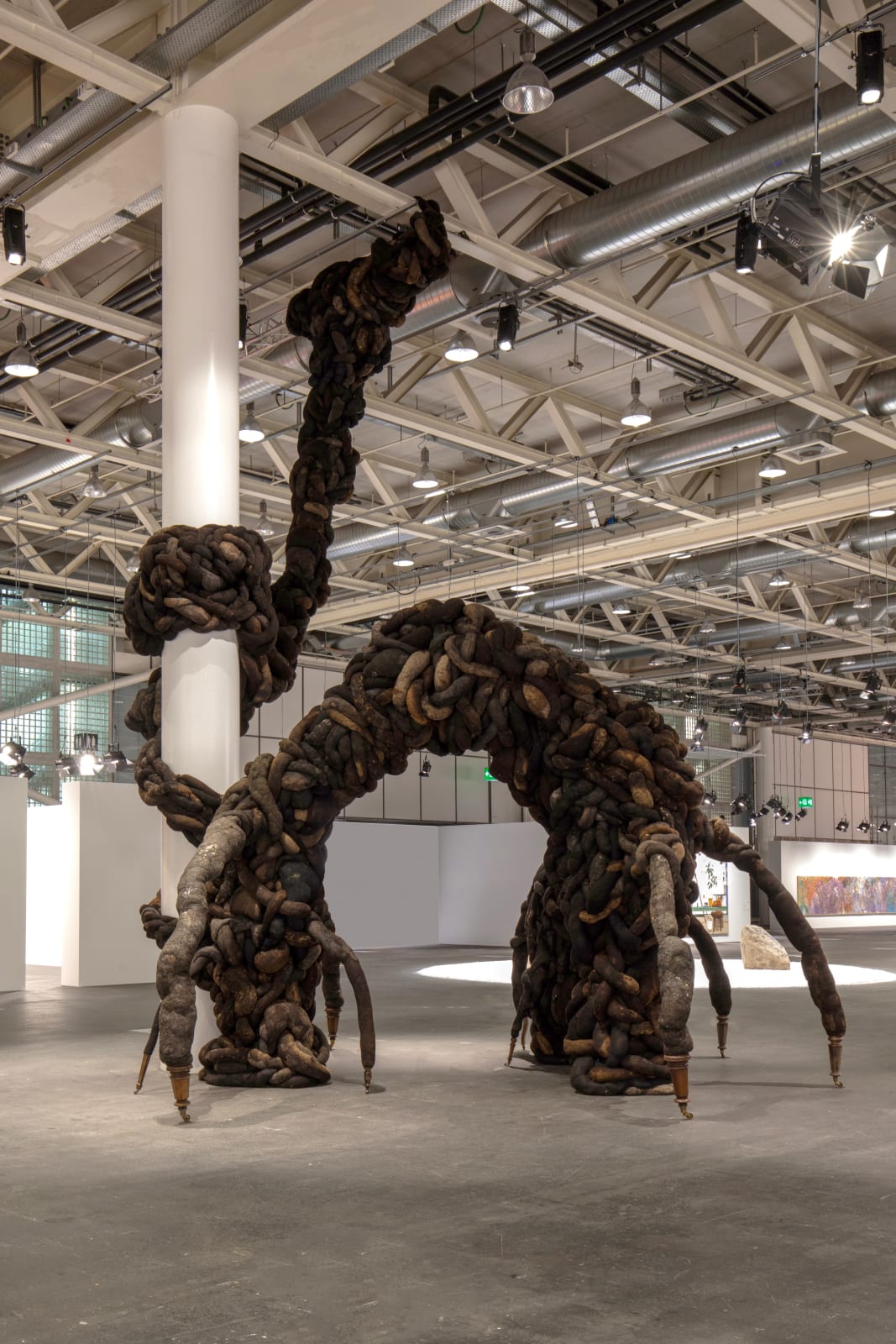


 Gabriele Abruzzese shot
Gabriele Abruzzese shot

Nicola Turner British, b. 1967
Further images
Turner is an artist known for creating large scale, visceral installations from wool and waste horsehair, often made in response to their surroundings. Last summer she gained attention for her site responsive installation The Meddling Fiend which interacted with the statue of Sir Joshua Reynolds in the Courtyard of the Royal Academy, London, for the duration of the Summer Exhibition. With a background in set and costume design, Turner graduated from Central St Martins School of Art & Design and has worked with The Royal Opera House, San Francisco Opera, Scottish Ballet, Royal Shakespeare Company and Sydney Opera House where she was the recipient of a Green Room Award. In 2019 she completed a MA in Fine Art at Bath Spa University. She was recently awarded the RWA Academy Award for her sculpture Klipp und Klapp. Turner has exhibited recently at Carvalho Park Gallery, New York; The Bomb Factory, London; The Royal Academy, London; Od Arts Festival, Somerset and Skaftfell Arts Centre, Iceland.
Danse Macabre, combines found objects that hold traces of memory with the shapes of living forms and materials, from organic ‘dead’ matter such as horsehair - a material used previously for bedding and furniture and, in that regard, alive with history. She explores how these materials give off energy forces, including how ‘dead’ matter can provoke a visceral and sometimes simultaneous feeling of aversion and attraction that can prompt new ways of looking. Her work resonates with the notion of abjection: with this primal instinct - a disorientating sense of attraction and repulsion that upsets our perceived firm grasp of the world - there is an acute awareness of melancholy and death. Amid this state of unsettlement, however, an affirmation of life’s forces and the possibility of renewal is present.
The title Danse Macabre is taken from a Late Middle Ages allegorical art form, that depicts the universality of death as a direct response to plagues and epidemics. Danse Macabre has become a recurring theme in art history and is often used to depict death as a social equalizer and a reminder of the fragility of life and the vanity of earthly glory. Basel’s own Danse Macabre mural, painted around 1435-1441, remained one of the city’s greatest attractions until it was torn down by locals, who declared it a scandal, in August 1805. Turner updates this theme in the context of contemporary pandemics.
An awareness of the climate emergency and striving to be environmentally responsible has always been at the heart of Turner’s work. She works with recycled and reused materials, scavenged or salvaged materials, and sustainable materials and processes, that minimize environmental impact throughout the entire lifecycle of an artwork, from creation to display to end of life.
Danse Macabre will be a visually arresting installation that will introduce Turner’s impressive practice to the Art Basel audience. It will be a precursor to Turner’s first solo exhibition at Annely Juda, London in 2026.




